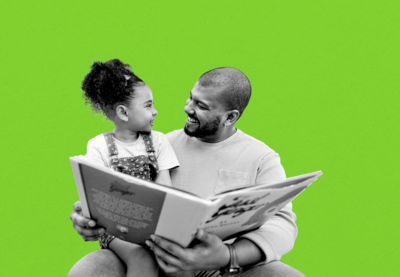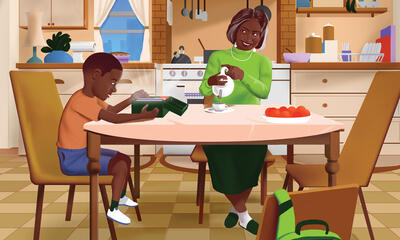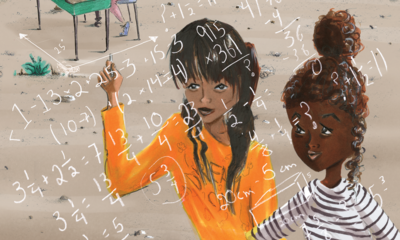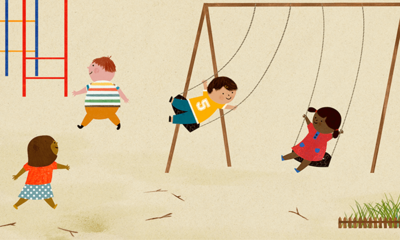Rudine Sims Bishop, professor and advocate for multicultural literature, emphasizes the importance of literature in encouraging us to “understand each other better by helping to change our attitudes towards difference.” Bishop describes books as windows, mirrors and sliding glass doors.
Literature as mirrors “transforms the human experience and reflects it back to us. In that reflection, we can see our own lives as part of a larger human experience.”
“Books are sometimes windows offering views of worlds that may be real or imagined, familiar or strange.”
Literature acts as sliding glass doors as “Readers have only to walk through in imagination to become part of whatever world has been created or recreated by the author.
Important Points for Reading Together With Children
- Use age-appropriate dialogue and ideas.
- Stop and listen. Give children the chance to speak and be heard by practicing active listening.
- Preview the text. Talk about the cover, pictures and art. Use them to create new art.
- Engage with emotional and intellectual aspects of the text.
- Model how to think about difficult topics or choices.
- Model how to discuss your emotional responses.
- Enjoy stories together. We are never too old to get lost in a book.
Reflection Questions
- How are my identities and experiences positioned to the story?
- How does reading and storytelling affect how I view the world?
- How does the story, or characters, make me feel?
- Draw connections between this text and something else that you have read, viewed or listened to.
Discussion Questions
- How does this story serve as a window, mirror or sliding glass door for you?
- How do characters empower themselves or take action? How could you take action on a topic that is important to you?
- Choose a quote or excerpt that resonates with you. Explain why you connected with it.
- How can I become the person that I want to be?
Learning Activity
1. My Story Reflection
To build your literacy skills think about story elements, such as setting (when and where), character (who), plot and conflict (what happened), and theme (meaning or message). For example, how does the place, culture and time—the setting—add meaning to the story? Think about the role the place plays. Talk about people in the stories and their roles in their communities. Make connections to roles today—leaders, doctors, teachers, artisans, farmers, soldiers, caregivers and more. Consider the conflicts (internal and external) and how the character responds and takes action, and make connections to how you might respond to similar conflicts.
Creating a foldable project can be an enjoyable way to organize responses to reading. One simple format involves using a file folder that can be folded like opening doors and then adding art and writing. You can add more to the folder by drawing and writing on it directly or by creating responses that are then glued into the folder in sections or that can fold out.
Some response ideas include:
- a drawing of the character(s) (see activity above) or character collage
- a map of the place
- a drawing of a cultural artifact
- a note to the main character
- a timeline of what happened
- a writing about the story’s message (a sentence or more, depending on the child’s ability)
- a reflection about the story that includes thoughts and feelings
- a creative response such as an artwork or a poem inspired by the story
Creative technology tools, like Padlet, can also be a great way to complete a story reflection project together.
Remember, literature can be transformative in helping us learn about the world and see ourselves as part of the shared human experience. Through reading, reflecting and taking action in our daily lives to create more inclusive communities, we can resist hate and the efforts to limit our freedom to learn.



